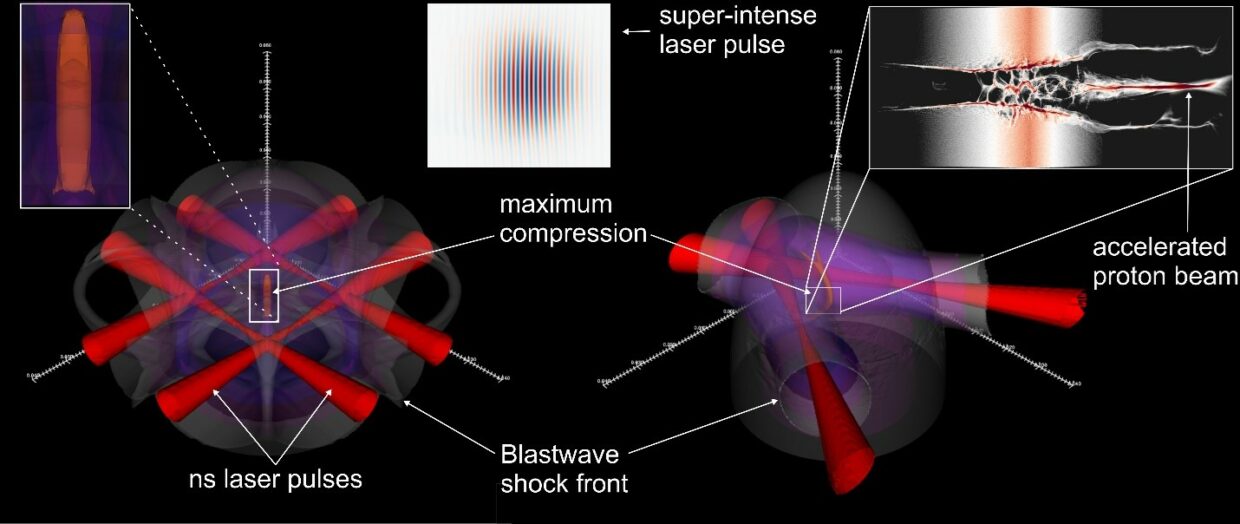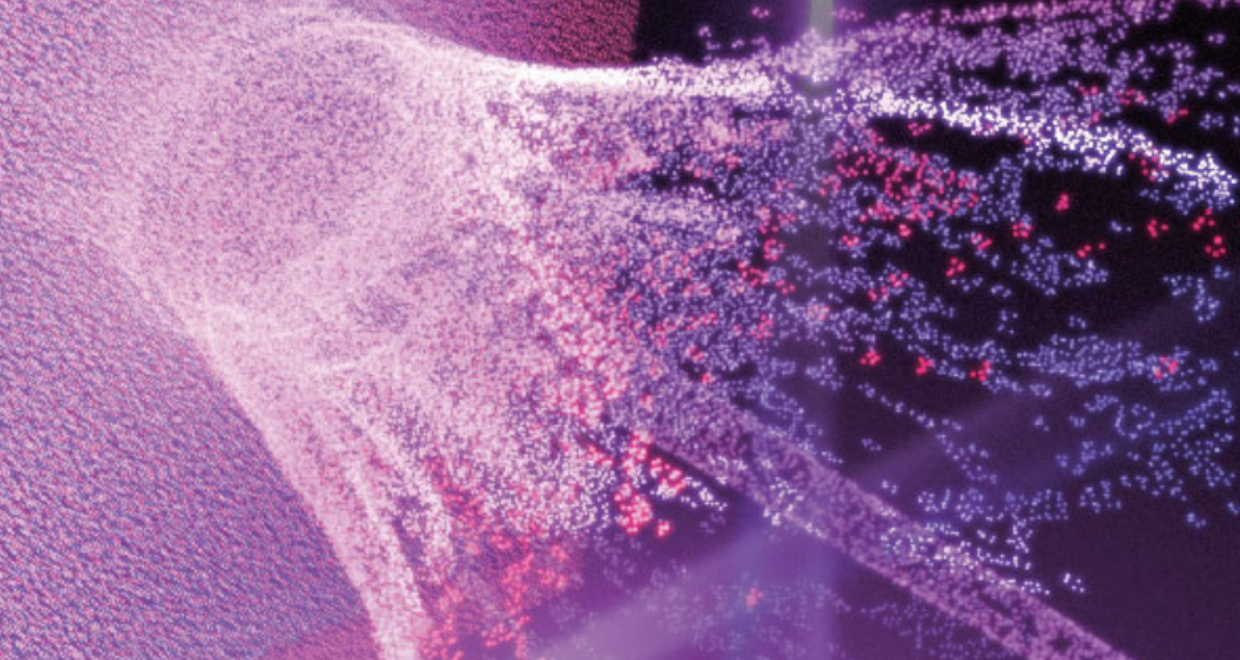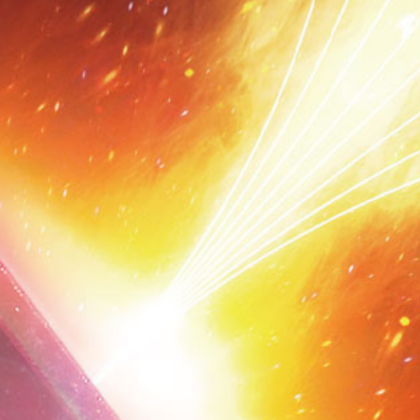On the Cover of HPL: A computational study on the optical shaping of gas targets via blast wave collisions for magnetic vortex acceleration
In this work, the optical shaping of gas target profiles for proton laser induced acceleration experiments are studied by numerical simulations, at the Institute of Plasma Physics & Lasers – IPPL of the Hellenic Mediterranean University – HMU. Multiple hydrodynamic Blast Waves (BWs) are modeled to simulate the production of near-critical (NCR), short scale length, gas target profiles. The BWs are generated by low intensity laser pulses in parallel and intersecting variations. The frontal collision of the blast BWs shock fronts is exploited to efficiently compress the gas targets and lead in sharp, highly compressed gas target profiles. The experimental set-up parameters are determined for the generation of the optimal compressed profiles which will be irradiated by the super-intense ultra-short pulse of the ZEUS laser [1] for particle acceleration studies via Magnetic Vortex Acceleration (MVA).
Laser-induced particle acceleration attract the interest of the scientific community due to their numerous potential applications in inertial confinement fusion, medical applications such as hadron therapy, as well as due to the fundamental physics involved. Therefore, IPPL’s experimental team focuses on the experimental production of the optimal target profiles to be irradiated by the ZEUS laser to deliver accelerated protons having the maximum energy and population possible.
In the near-critical density regime, the most efficient acceleration mechanism is the Magnetic Vortex Acceleration (MVA). In this mechanism a laser pulse, propagating in an NCR density gas, accelerates electrons on its wake, creating a thin electron filament that leads to a strong electric current. As a result, a strong azimuthal magnetic field is generated that remains confined in the plasma channel. As the laser pulse penetrates the dense region and escapes from the rear of the target into the vacuum, the confined magnetic field starts to expand, generating a strong longitudinal electric field, which accelerates the protons. The first inlet in Figure 1 shows the accelerated proton filament further pinched by the magnetic vortex resulting in a collimated energetic particle beam.

Maximum compression of the gas target is achieved by using four laser pulses in a vertically intersecting geometry, as seen in figure 1, compressing the initial gas density by a factor of higher than 20 its initial density. The compressed plasma density was extremely steep, while the absence of low-density pedestal before the propagating compressed shock front, is observed, that is beneficial for proton acceleration experiments since this type of plasma pedestals can strongly affect the focusing conditions of the accelerating laser pulse. These compressed plasma slabs, maintain their compression for a few hundreds of picoseconds. By setting two blast wave generating laser pulses intersecting at a 60-degree angle a sufficient compression factor of more than 10 times the initial density is achieved, maintaining its compressed profile for longer than 2.5 ns, resulting in an above 10 times longer time window. This behavior is favorable for proton acceleration experiments due to the large, nanosecond-scale time window, offered for synchronization with the main laser pulse under laboratory conditions. Furthermore, in this set-up, the absence of a low-density pedestal plasma, before the compressed shock front, is observed.
This numerical study identified the optimal optical shaping parameters to be implemented under the experimental campaign in the IPPL. The high-density gas-jet target will be delivered by an air driven hydrogen gas booster along with a Solenoid valve, able to support 1 kbar of backing pressure. An 850 mJ, 1ns laser beam will be used for the generation of the BWs. This set-up will be installed in the main vacuum chamber of 1.5 m diameter, where ZEUS laser pulses will irradiate the NCR density target profiles. The laser pulse of ZEUS will be focused on the gas-target using an off-axis parabola, capable of focusing to a 3μm focal spot resulting to extreme intensity above 1020 W/cm2. The computational research of the efficiency and limitations of the dual intersecting nanosecond laser pulses set-up was found to be favorable for our experimental campaign plans. A parametric study for further optimization of the gas compression and maximization of the time window within the optically shaped profile is currently performed.
Prof V. Dimitriou, leading scientist of the numerical simulations, comments that the results of this study constitute a valuable diagnostic method and a precursor for the proton acceleration experiments that will take place at IPPL.
The Magnetohydrodynamic (MHD) and Particle-In-Cell (PIC) simulations performed for this computational research study are extremely computationally expensive, demanding up to 25 nodes of 20 cores to perform. The simulation wall-clock runtimes range from 6 to 32 hours. The HPC computational time was granted by the Greek National Infrastructures for Research and Technology (GRNET) for Advanced Research Information System (ARIS) under the project ID pr011027-LaMPIOS [2].
[1]: Clark, E. L., et al. “High-intensity laser-driven secondary radiation sources using the ZEUS 45 TW laser system at the Institute of Plasma Physics and Lasers of the Hellenic Mediterranean University Research Centre.” High Power Laser Science and Engineering 9 (2021).
[2]: http://doc.aris.grnet.gr/system/hardware/
Authors: I. Tazes, S. Passalidis, E. Kaselouris, I. Fitilis, M. Bakarezos, N. A. Papadogiannis, M. Tatarakis, V. Dimitriou
Published OPEN ACCESS in High Power Laser Science and Engineering






